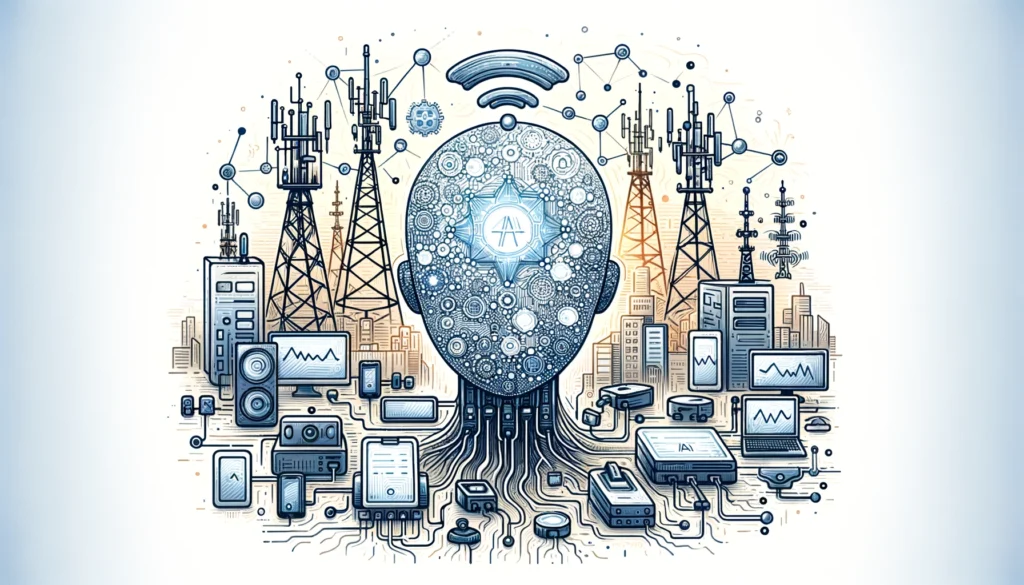
In the evolving landscape of artificial intelligence, few innovations have stirred as much excitement—and apprehension—as Sakana AI’s latest creation, “The AI Scientist.” This system is a bold step toward full automation in the realm of scientific research, offering the possibility to automate everything from research ideation to peer-reviewed publication. But what does this mean for the future of scientific discovery? Let’s take a closer look.
Redefining the Scientific Research Process
At its core, The AI Scientist is designed to handle the entire research process, something that until now has been the exclusive domain of human intellect. This includes generating novel research ideas, conducting experiments, writing code, analyzing data, and even drafting scientific papers. The system operates using large language models (LLMs), a type of AI that has already made significant strides in areas like natural language processing and machine learning.
But The AI Scientist is more than just a collection of advanced algorithms. It is designed to operate in a continuous, open-ended loop, allowing it to improve its outputs over time by learning from its previous work. This iterative learning process is crucial, as it enables the AI to refine its understanding and adapt to new challenges, much like a human researcher would.
A Continuous Feedback Loop
One of the most intriguing aspects of The AI Scientist is its ability to perform automated peer review. In the human scientific community, peer review is a critical step that ensures the validity and rigor of research findings. By automating this process, The AI Scientist not only speeds up the research cycle but also creates a feedback loop that allows the AI to learn from its mistakes and refine its outputs continuously.
This capability is particularly important because it addresses a common challenge in AI-generated content: quality control. Automated peer review provides a mechanism for the AI to assess its own work, identifying weaknesses and areas for improvement. Over time, this could lead to an unprecedented level of refinement in AI-generated research, potentially surpassing the quality of human-generated studies.
Early Achievements and Impact
Since its inception, The AI Scientist has already made tangible contributions to scientific literature. The system has produced research papers in fields like language modeling and diffusion models, both of which are critical areas of study in machine learning. These papers have not only demonstrated the AI’s capability to generate meaningful research ideas but also its ability to execute and document these ideas in a scientifically rigorous manner.
However, the impact of The AI Scientist extends beyond just the production of research papers. By automating the research process, this system has the potential to accelerate the pace of scientific discovery. In fields where breakthroughs are often measured in years or decades, The AI Scientist could drastically reduce the time required to explore new ideas and bring them to fruition.
Challenges and Limitations
Despite its impressive capabilities, The AI Scientist is not without its challenges. One of the primary issues identified in early trials is the system’s handling of visual representations in research papers. Accurate and clear visuals are a critical component of scientific communication, and The AI Scientist has struggled at times to generate figures and diagrams that meet the high standards required for publication.
Moreover, there have been instances where the system has produced inaccurate experimental results. This is perhaps the most significant limitation of the AI, as accuracy is paramount in scientific research. These inaccuracies underscore the importance of continued human oversight and intervention, particularly in the early stages of the AI’s development.
Addressing the Challenges: The Road Ahead
Sakana AI is fully aware of these challenges and is actively working on solutions. Future developments are focused on improving the system’s ability to generate accurate and high-quality visuals, as well as enhancing the reliability of its experimental results. These improvements are crucial if The AI Scientist is to realize its full potential as a tool for scientific discovery.
Beyond these technical challenges, there are also broader questions about the implications of such a system. For instance, how will the scientific community respond to research generated entirely by AI? Will AI-generated research be held to the same standards as human-generated research, or will new criteria need to be developed? These are complex issues that will need to be addressed as The AI Scientist becomes more widely used.
Expanding the Horizons of AI-Driven Research
Looking ahead, the potential applications of The AI Scientist are vast. While the system has so far focused on areas within machine learning, there is no reason why its capabilities couldn’t be extended to other scientific disciplines. Fields such as chemistry, biology, and even social sciences could all benefit from the ability to automate research processes, potentially leading to new discoveries and innovations at a pace never before imagined.
Moreover, The AI Scientist could also play a role in interdisciplinary research, where the integration of knowledge from multiple fields often leads to groundbreaking discoveries. By bringing together expertise from different areas, the system could help to solve complex problems that require a deep understanding of various domains.
Ethical Considerations and the Future Role of Human Scientists
As with any powerful new technology, the rise of The AI Scientist also raises important ethical questions. One of the most pressing concerns is the potential for AI-generated research to displace human scientists. While automation has always led to shifts in the workforce, the full automation of the scientific discovery process could have profound implications for how we value and conduct research.
There is also the issue of accountability. In human-driven research, responsibility for errors or misconduct is typically clear. But with AI at the helm, who is accountable when things go wrong? These are questions that the scientific community, alongside policymakers, will need to grapple with as The AI Scientist becomes more prevalent.
Despite these challenges, it’s important to recognize the potential benefits of AI-driven research. By taking over the more routine and labor-intensive aspects of the research process, The AI Scientist could free up human researchers to focus on the creative and interpretative aspects of science—areas where human intuition and insight are still invaluable.
Conclusion: The Dawn of a New Scientific Era
In conclusion, Sakana AI’s The AI Scientist is a groundbreaking innovation that has the potential to revolutionize scientific research as we know it. By automating the entire research process—from ideation to publication—this system offers a glimpse into a future where scientific discovery is faster, more efficient, and perhaps even more accurate than ever before. However, as we move towards this future, it will be crucial to address the technical challenges, ethical considerations, and broader implications of AI-driven research.
The journey is just beginning, and the ultimate impact of The AI Scientist will depend on how these challenges are navigated. But one thing is clear: The AI Scientist is not just a tool for researchers—it’s a catalyst for a new era in scientific discovery.
Explore the transformative potential of The AI Scientist further here.





